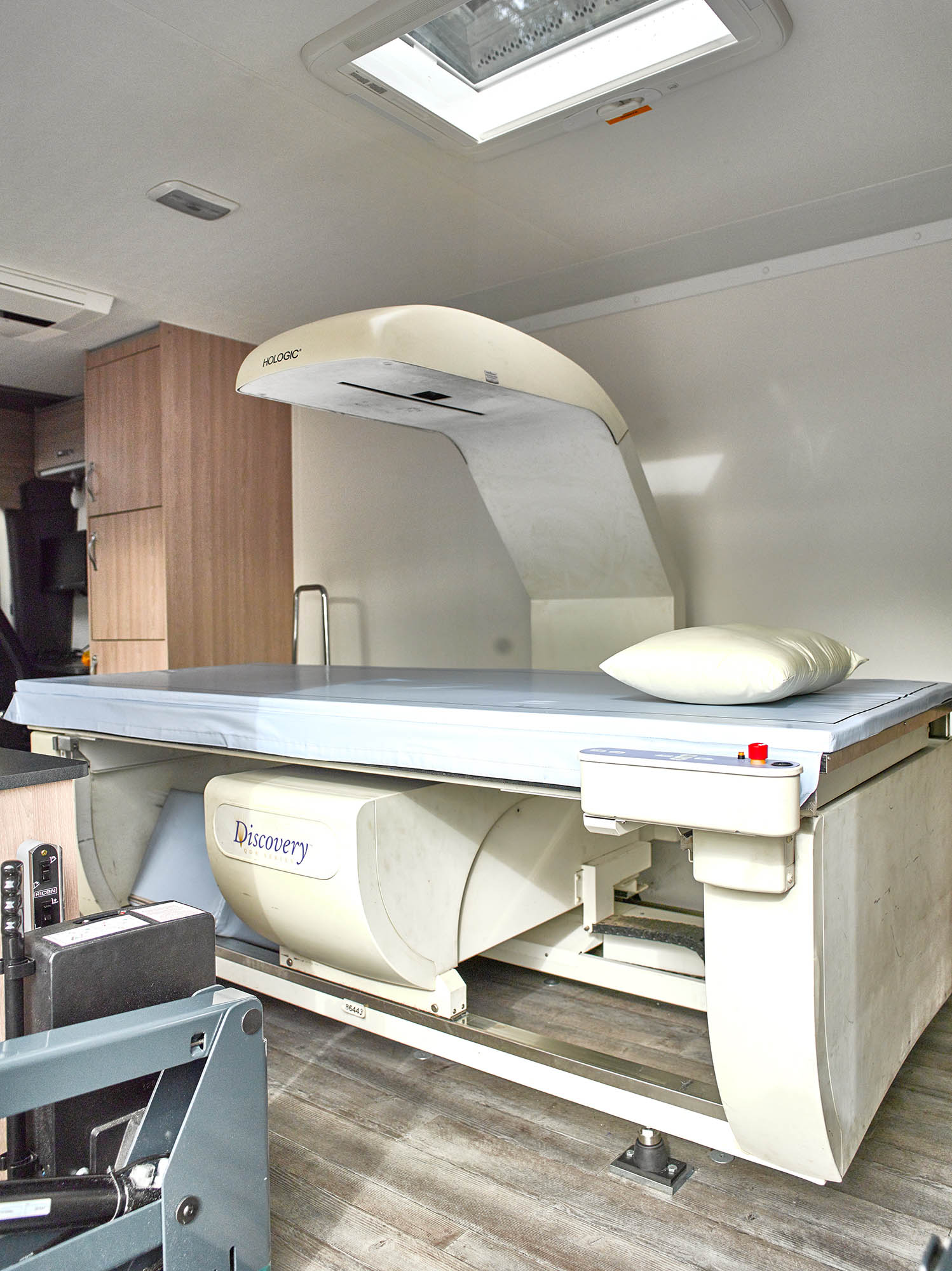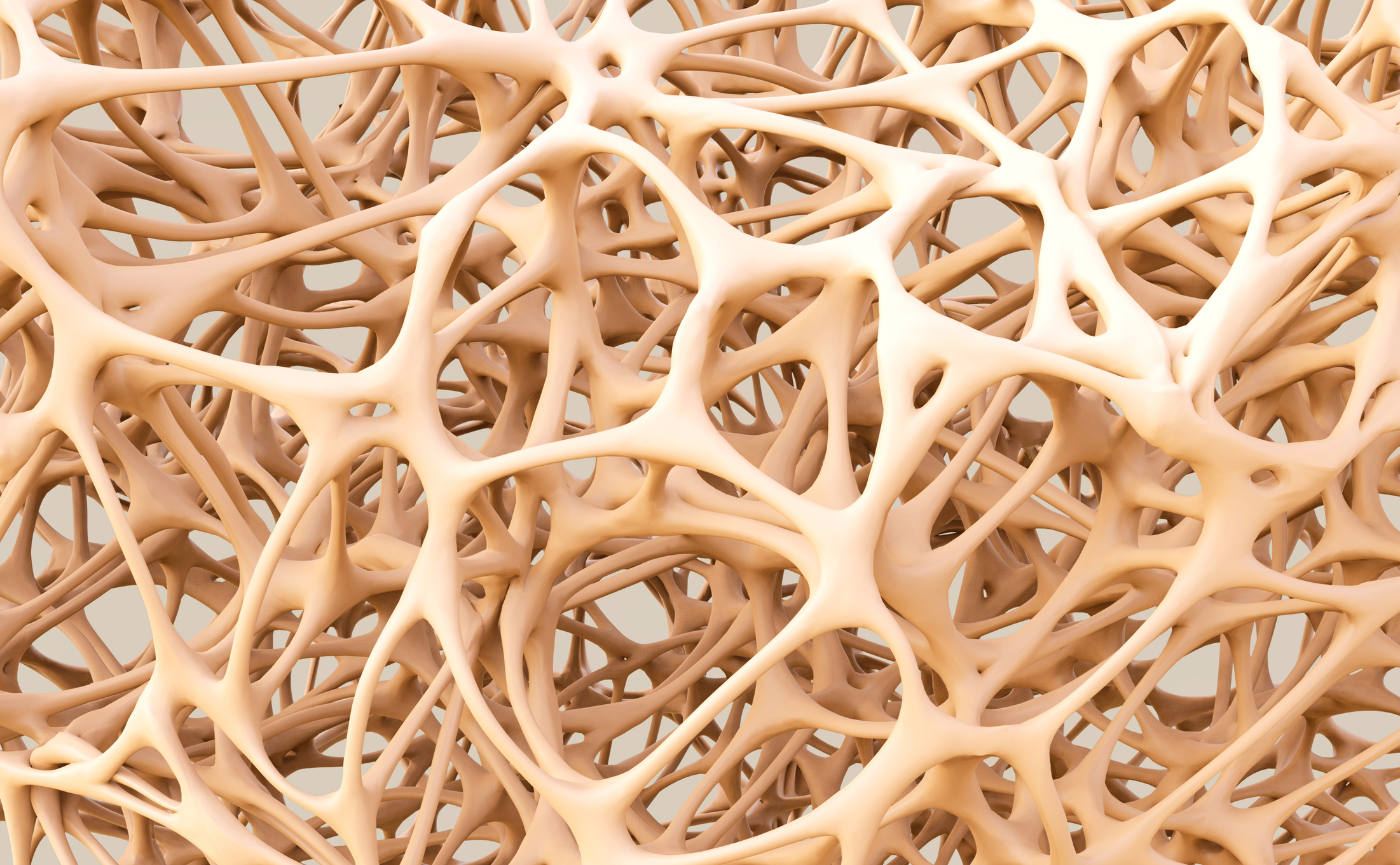“In Australia, every 3.6 minutes, someone is admitted to hospital with an osteoporotic fracture. By 2022 there will be 1 fracture every 2.9 minutes”
“In Australia, every 3.6 minutes, someone is admitted to hospital with an osteoporotic fracture. By 2022 there will be 1 fracture every 2.9 minutes”
The Bone Bus is a mobile bone densitometry service. We provide an accurate, reliable and precise bone mineral density measurement service. Patients do not need to travel to a major hospital or radiology lab to have their bone density measured. We can complete the assessment and return the report promptly (via Healthlink) –all from our comfortable, mobile lab equipped with a State-of-the-art bone densitometer (DEXA) that is operated by specially trained and certified Bone Bus technologists. This is completed whilst being parked right in front of your practice.

Our mission is to promote lifelong bone health through public awareness, education and knowledge of osteoporosis.
We are partnered with Healthy Bones Australia in facilitating the prevention and diagnosis of osteoporosis in order for doctors to prevent, treat and manage their patients effectively and efficiently.
We support doctors, patients and ACF’s in rural and regional Australia with diagnostic technology that has previously been inaccessible outside major towns/cities. Doctors are now able to diagnose more patients resulting in improved fracture prevention. All patients are bulk billed when referred using a Medicare item number.

Osteoporosis is a condition in which the bones become fragile and brittle, leading to a higher risk of fractures (breaks or cracks) than in normal bone.
Osteoporosis occurs when bones lose minerals, such as calcium, more quickly than the body can replace them, leading to a loss of bone thickness (bone mass or density). As a result, bones become thinner and less dense, so that even a minor bump or accident can cause serious fractures. These are known as fragility or minimal trauma fractures.
Any bone can be affected by osteoporosis, but the most common sites are bones in the hip, spine, wrist, ribs, pelvis and upper arm. Osteoporosis usually has no signs or symptoms until a fracture happens – this is why osteoporosis is often called the ‘silent disease’.
Yes. The bone density scan is bulk-billed for all patients that are 70 years old and above.
For patients that are under 70, if you have a pre-existing medical condition such as: a minimal trauma fracture; early onset of menopause; chronic liver or renal disease; rheumatoid arthritis (to name a few), you would be eligible to have a bulk-billed scan every 12 to 24 months depending. You will need to discuss this with your GP.
The cost of a bone density scan is $120
Yes – anyone wanting a DEXA scan MUST have a valid GP referral
You have no way of knowing whether you have low bone density or Osteoporosis unless you have a bone density scan.
Those affected by the condition are unaware that their bones are thinning until they have a bone density scan or experience a fracture as a result of a fall from standing height.
No. Getting a bone density scan is very safe.The radiation from the scan is of an extremely low. By comparison, it is half the amount of radiation the average person receivesfrom natural background radiation (NBR)
The scan is painless and it only takes two minutes to complete both the hip and spine
No. You remain fully clothed for your scan. We do advise not to wear any metal in the form of zips, belts, buckles or underwire bras as this can interfere with the results of the scan.
Yes, the scan won’t affect the pacemaker and the pacemaker will not affect your results.
Yes, we require two vertebrae to get a valid lumbar spine bone density diagnosis. If this is not possible, we will scan a tertiary site such as the non-dominant wrist.
Yes, we will scan your lumbar spine sand thenon-dominant wrist.
There is NO cost for the practice to have the Bone Bus service visit the medical centre.
We do not take up ANY space in your clinic – scans are performed in the Bone Bus. If you have room for us in your car park, then that is ideal for your patients.
Yes- We have an internal parking division that liaises with council; centre managers; landlords and property managers to get the relevant permits and (or) permissions to park the Bone Bus as close to the medical centre as possible
Results are sent via Health Link directly to the Doctor’s portal or by way of fax if there is no Health Link account within three to five business days from the final scan
There is NO difference between the accuracy and performance of a mobile DEXA compared to a freestanding DEXA. There are two well-known bone densitometer manufacturers used in Australia – Hologic and GE. These densitometers are found both in fixed and mobile laboratories across Australia. Both these densitometers more importantly provide the correct diagnostic measures of the lumbar spine and femoral neck reported on by Radiologists and approved by Medicare Australia. There is no difference in the outcome whether that measure is undertaken at a fixed site or in a mobile environment. As per Medicare Australia requirements our Hologic densitometers are calibrated daily to ensure reliability of the measures as they would be in a fixed facility. The only difference is that we come to you
We have a dedicated Bone Bus for each medical centre that we visit. The same Bone Bus and DEXA will be used for each subsequent visit. This allows us to provide the medical centre and their patients with continuity of service to ensure the same DEXA is used. For each subsequent scan, the patient’s rate of change will be recorded and tabled on the radiologist’s report.
The Bone Bus will visit each medical centre annually (after 12 months from their previous scan)
NSW & ACT 02 8358 1611
VIC & TAS 03 9100 1711
QLD 07 3543 3311
WA & SA 08 6285 4511
Visit Us Level 9, 84 Pitt Street, Sydney 2000